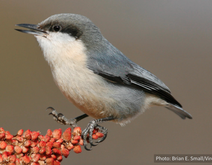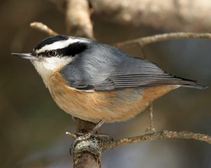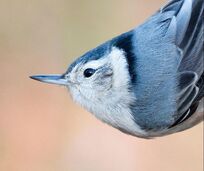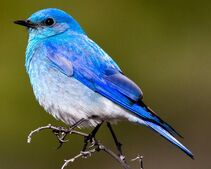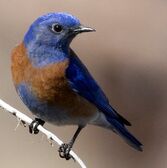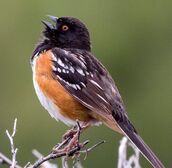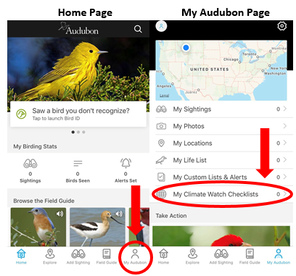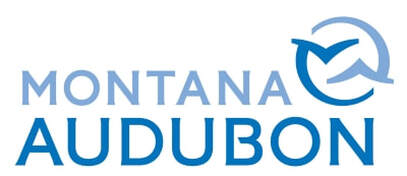Climate Watch
Click on the pictures to hear their calls!
According to Audubon’s 2019 climate change report, ‘Survival By Degrees,’ up to two-thirds of North American birds are vulnerable to extinction. Climate Watch aims to document species’ responses to climate change by having volunteers in the field look for birds where Audubon’s climate models predict them to be in the 2020s. Volunteers who complete Climate Watch counts, serve a critical role collecting data that will help us understand how birds are responding to climate change.
Winter Survey: January 15- February 15 Surveying for all 3 nuthatches above.
Summer Survey: May 15-June 15 survey for all 3 nuthatches, Mountain and Western Bluebird and Spotted Towhee
Everything you need:
Winter Survey: January 15- February 15 Surveying for all 3 nuthatches above.
Summer Survey: May 15-June 15 survey for all 3 nuthatches, Mountain and Western Bluebird and Spotted Towhee
Everything you need:
|
Instructions to see what squares are available: 1: Open the website using the link above. Once open, on the top left toggle to 'Claim a Square', then zoom into Montana,
3: Click on the 'Layers' (top left-hand side), 4: Click on any 'Nuthatch' species Squares will turn blue for winter, Orange for Summer, Red for both seasons to indicate they are taken.. |
Step 1: Species
Climate Watch surveys specific bird species, target species, for which we have climate models with strong predictions and have high detectability in the field. Currently, Montana will be focusing on White-Breasted Nuthatch, Red-Breasted Nuthatch and Pygmy Nuthatch. What is great about this survey is you are able you identify the species by sight and sound!
Step 2: Where To Go
Contact your regional coordinators, Western MT: gwynne@mtaudubon.org or Eastern MT: echilcoat@mtaudubon.org to select one (or more) 10 x 10 km squares to survey. Consider coming back to these same 10 x 10 squares year after year for consistent data. Take into consideration Winter/Summer conditions and if the square location is accessible. Be sure to represent the best habitat for the target species within your given square.
More in depth information can be found on pages 8, 9, and 10 in the Climate Watch Manual.
Step 3: Time Period
The Climate Watch survey period occurs over two 30-day periods each year, Winter (January 15-February 15) and Spring (May 15-June 15). Participants may choose any day within the count period to conduct their survey, preferably before noon. All 12-point counts, must be conducted on one day, but different squares can be conducted on different days. The surveying may take anywhere from 3- 5 hours to conduct, so come prepared.
More in depth information can be found on pages 8 and 9 in the Climate Watch Manuel.
Climate Watch surveys specific bird species, target species, for which we have climate models with strong predictions and have high detectability in the field. Currently, Montana will be focusing on White-Breasted Nuthatch, Red-Breasted Nuthatch and Pygmy Nuthatch. What is great about this survey is you are able you identify the species by sight and sound!
Step 2: Where To Go
Contact your regional coordinators, Western MT: gwynne@mtaudubon.org or Eastern MT: echilcoat@mtaudubon.org to select one (or more) 10 x 10 km squares to survey. Consider coming back to these same 10 x 10 squares year after year for consistent data. Take into consideration Winter/Summer conditions and if the square location is accessible. Be sure to represent the best habitat for the target species within your given square.
More in depth information can be found on pages 8, 9, and 10 in the Climate Watch Manual.
Step 3: Time Period
The Climate Watch survey period occurs over two 30-day periods each year, Winter (January 15-February 15) and Spring (May 15-June 15). Participants may choose any day within the count period to conduct their survey, preferably before noon. All 12-point counts, must be conducted on one day, but different squares can be conducted on different days. The surveying may take anywhere from 3- 5 hours to conduct, so come prepared.
More in depth information can be found on pages 8 and 9 in the Climate Watch Manuel.
|
Step 4: Recording and Submitting Data
Here are detailed descriptions for submitting data, HERE 1 – Audubon’s mobile app: This Audubon app can be used to capture your location in the field where coverage is available. Once you have saved your checklists through the app, Audubon has the data and you are done. Note: the Audubon app's Climate Watch checklist is only available during the count period. Submitting Data: Once you have saved your checklists through the app, Audubon has the data and you are done. |
Above is an example of how to navigate the within the Audubon app.
'My Climate Watch Checklist' only visible during count period. |
2 - eBird mobile app: The eBird app can be used to capture your location automatically in the field wherever coverage is available. Do a separate checklist for all of the 12-points.
Submitting data: Log into the web version of eBird (do not use the mobile app for this step), copy the URL of each checklist, and submit the data through this portal: HERE
3 - Paper forms can be found here: Paper Forms.
Submitting Data: Option 1: When the survey is complete please copy data into this Excel file HERE and
email file to: Climatewatch@audubon.org.
Option 2: Scan your paper forms, put all forms into an email, then send to: Climatewatch@audubon.org
Step 5: Identify your 12 points
Identify 12 points that represent the best habitat for the target species within the given square. Make sure these points are safe and accessible! To avoid double counting, points should be at least 200 meters (656 feet) apart, "as the bird fly's". Naming these 12 points can be helpful for when you come back the following year. Be sure to stay within your designated square when conducting your 12 survey points. If there is an area you are interested in going that is outside of your designated square contact your local coordinator get set up for a 2nd square.
Notes:
Step 6: Conduct 5-Minute Counts
Conduct 5-minute stationary point counts at each of the 12 points. Set a 5-minute timer on your phone to avoid checking your phone. Record observations using eBird, the Audubon app, or paper forms, with each of the 12 points having an individual checklist. If you did not observe the target species, or any birds, still submit the individual checklist. Data on the absence of birds, is very important in the analysis.
More in depth information can be found on pages 10 and 11 in the Climate Watch Manual.
Step 7: Submit your data
Please submit all Climate Watch survey data to Audubon within 15 days of the end of each count period.
1 – Audubon’s mobile app: Once you have saved your checklists through the app, Audubon has the data and you are done.
2 - eBird mobile app: Log into the web version of eBird (do not use the mobile app for this step), copy the URL of each checklist, and submit the data through this portal: HERE
3 - Paper forms can be found here: Paper Forms. When survey is complete please scan them into a PDF or place into an Excel file and email lists to: Climatewatch@audubon.org.
Submitting data: Log into the web version of eBird (do not use the mobile app for this step), copy the URL of each checklist, and submit the data through this portal: HERE
3 - Paper forms can be found here: Paper Forms.
Submitting Data: Option 1: When the survey is complete please copy data into this Excel file HERE and
email file to: Climatewatch@audubon.org.
Option 2: Scan your paper forms, put all forms into an email, then send to: Climatewatch@audubon.org
Step 5: Identify your 12 points
Identify 12 points that represent the best habitat for the target species within the given square. Make sure these points are safe and accessible! To avoid double counting, points should be at least 200 meters (656 feet) apart, "as the bird fly's". Naming these 12 points can be helpful for when you come back the following year. Be sure to stay within your designated square when conducting your 12 survey points. If there is an area you are interested in going that is outside of your designated square contact your local coordinator get set up for a 2nd square.
Notes:
- If there is a bird feeder within your survey point be sure to record its presence.
- Feel free to record all species you hear or see.
- Consider the weather and conduct your surveys only if the conditions will not jeopardize your safety or impact the detectability. Be sure to layer properly for cold weather! Cold weather may also affect your battery life so be sure to have a changed phone along with any other electronics you bring.
Step 6: Conduct 5-Minute Counts
Conduct 5-minute stationary point counts at each of the 12 points. Set a 5-minute timer on your phone to avoid checking your phone. Record observations using eBird, the Audubon app, or paper forms, with each of the 12 points having an individual checklist. If you did not observe the target species, or any birds, still submit the individual checklist. Data on the absence of birds, is very important in the analysis.
More in depth information can be found on pages 10 and 11 in the Climate Watch Manual.
Step 7: Submit your data
Please submit all Climate Watch survey data to Audubon within 15 days of the end of each count period.
1 – Audubon’s mobile app: Once you have saved your checklists through the app, Audubon has the data and you are done.
2 - eBird mobile app: Log into the web version of eBird (do not use the mobile app for this step), copy the URL of each checklist, and submit the data through this portal: HERE
3 - Paper forms can be found here: Paper Forms. When survey is complete please scan them into a PDF or place into an Excel file and email lists to: Climatewatch@audubon.org.
To find more information about Climate Watch go to the National Audubon Website.
Please email if you have any questions or would like to volunteer for this unique effort.
Western MT: Gwynne Rohde: gwynne@mtaudubon.org
Eastern MT: Emily Chilcoat echilcoat@mtaudubon.org
Western MT: Gwynne Rohde: gwynne@mtaudubon.org
Eastern MT: Emily Chilcoat echilcoat@mtaudubon.org
By joining our online network, you will receive timely conservation updates, legislative news, our monthly eNews, information about upcoming events and more.
Montana Audubon depends on your financial support

